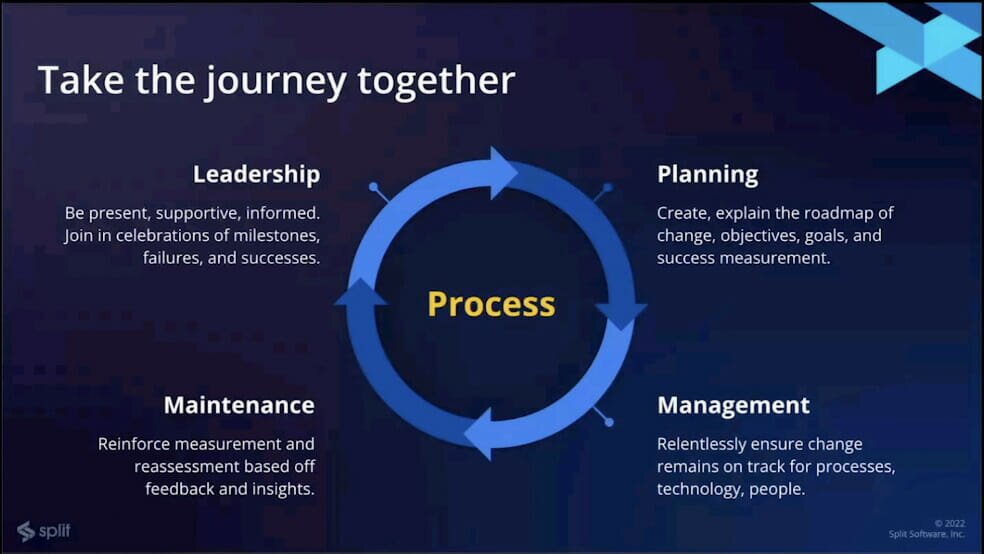In this ProductTank Toronto talk, Nate Archer, now Senior Product Manager at Ada shares with us a systematic approach to validating an idea by breaking it down into testable hypotheses.
His key points include:
- Origins
- Purpose and Value
- Process
- Case Study
Watch the video to see his talk in full. Or read on for an overview of his key points.
The Origins of Hypothesis-Driven Validation
Nate explains that hypothesis-driven validation provides a framework to help product teams validate more quickly and efficiently by breaking down their ideas. It embraces the uncertainty inherent in what product managers do. New products always include a lot of risk, this process acknowledges assumptions and reduces that risk.
Its Purpose and Value
The purpose of this approach is not to be different from traditional design and validation approach, Nate states. Instead, the framework helps to manage the process more easily and help teams better identify specific risks and squash them quickly. It is also best used in early-stage product discovery, whether that be a new product or feature.
The Process
The hypothesis-driven validation process starts with extracting assumptions and writing hypotheses. Extracting assumptions helps to determine the amount of risk for each course of action. Next these hypotheses are ranked and tests are designed. These tests are then ranked followed by a period of building, measuring and learning. This follows the lean testing approach of using a repeatable method to validate ideas. Finally, extract what was learned and act on it by iterating until it is time for an MVP.
A Case Study
At the time of his talk, Nate was a Product Manager at Connected Lab. He described how his team had used this approach to work on a product concept. They spent six weeks generating research to define their opportunities, three weeks generating the concept and defining the product, and then six weeks performing hypothesis-driven validation. This period showed them that some of the assumptions they made before weren’t applicable and helped to redefine their approach.
The key takeaways from this talk are that it is important to extract hypotheses as early as possible and use them to structure all other activities. Also, stick to an organizing method to keep your team aligned and focused on the goal.






